When Wetherspoon’s chairman, Tim Martin, opened his first pub in north London, in 1979, he named it Wetherspoons, after a Mr Wetherspoon – his teacher at primary school in New Zealand. The reasoning behind the name is that Mr Wetherspoon was too nice to be running Tim’s particular class and couldn’t control it; Tim thought to himself that, likewise, he couldn’t control his first pub, so considered the name to be appropriate.
A framed map and text about the local area.
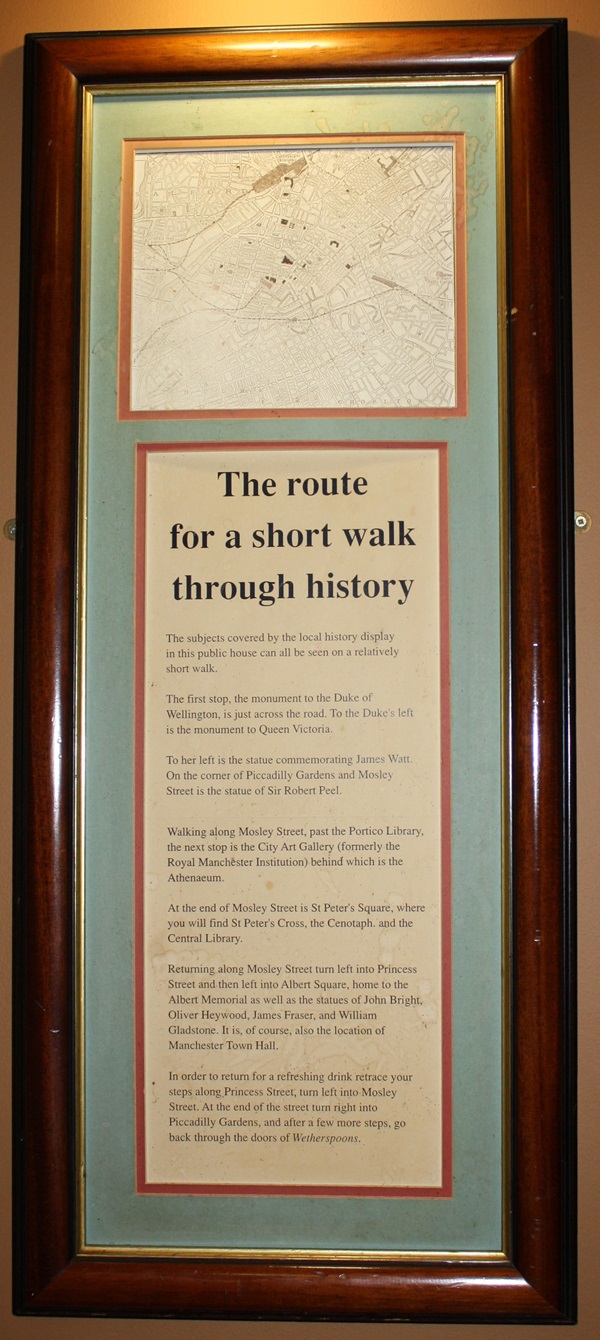
The text reads: The subjects covered by the local history display in this public house can all be seen on a relatively short walk.
The first stop, the monument to the Duke of Wellington, is just across the road. To the Duke’s left is the monument to Queen Victoria.
To her left is the statue commemorating James Watt. On the corner of Piccadilly Gardens and Mosley Street is the statue of Sir Robert Peel.
Walking along Mosley Street, past the Portico Library, the next stop is the City Art Gallery (formerly the Royal Manchester Institution) behind which is the Athenaeum.
At the end of Mosley Street is St Peter’s Square, where you will find St Peter’s Cross, the Cenotaph and the Central Library.
Returning along Mosley Street turn left into Princess Street and then left into Albert Square, home to the Albert Memorial qw well as the statues of John Bright, Oliver Heywood, James Fraser, and William Gladstone. It is, of course, also the location of Manchester Town Hall.
In order to return for a refreshing drink retrace your steps along Princess Street, turn left into Mosley Street. At the end of the street turn right into Piccadilly Gardens, and after a few more steps, go back through the doors of Wetherspoons.
A framed drawing and text about Sir Robert Peel during his parliamentary days.
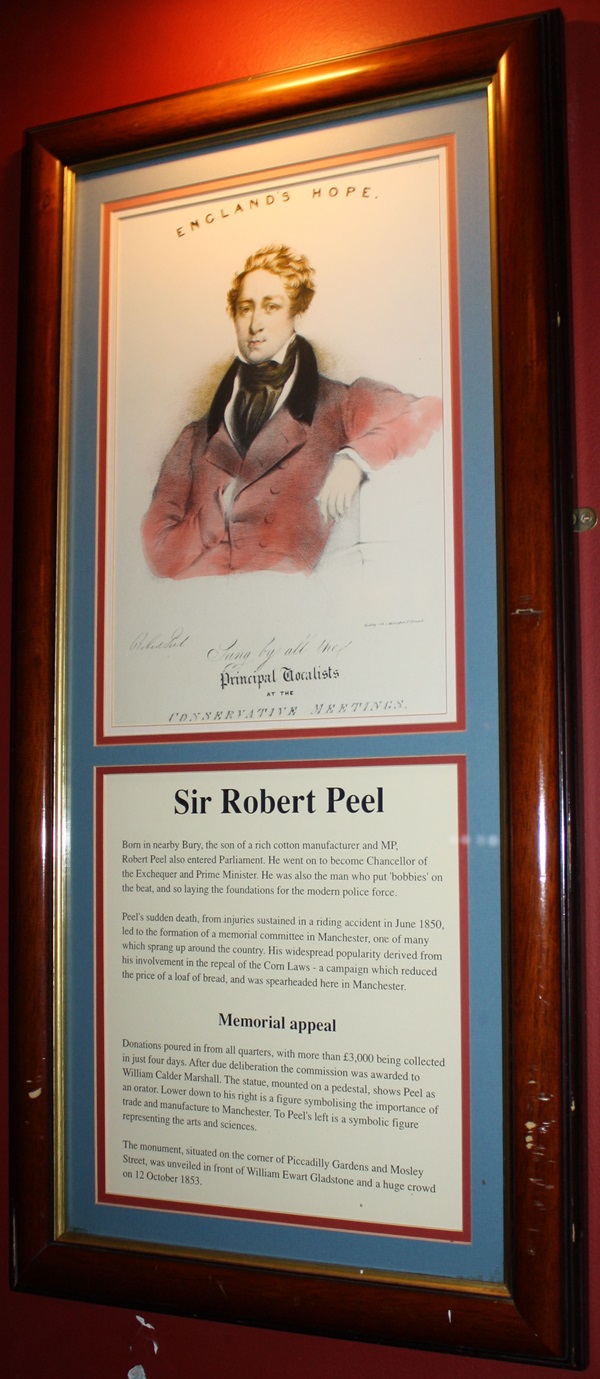
The text reads: Born in nearby Bury, the son of a rich cotton manufacturer and MP, Robert Peel also entered parliament. He went on to become Chancellor of the Exchequer and Prime Minister. He was also the man who put ‘bobbies’ on the beat, and so laying the foundations for the modern police force.
Peel’s sudden death, from injuries sustained in a riding accident in June 1850, led to the formation of a memorial committee in Manchester, one of many which sprang up around the country. His widespread popularity derived from his involvement in the repeal of the Corn Laws – a campaign which reduced the price of a loaf of bread, and was spearheaded here in Manchester.
Donations poured in from all quarters, with more than £3,000 being collected in just four days. After due deliberation the commission was awarded to William Calder Marshall. The statue, mounted on a pedestal, shows Peel as an orator. Lower down to his right is a figure symbolising the importance of trade and manufacture to Manchester. To Peel’s left is a symbolic figure representing the arts and sciences.
The monument, situated on the corner of Piccadilly Gardens and Mosley Street, was unveiled in front of William Ewart Gladstone and a huge crowd on 12 October 1853.
Framed drawings and text about The Albert Memorial and The Queen and Prince Albert at home.
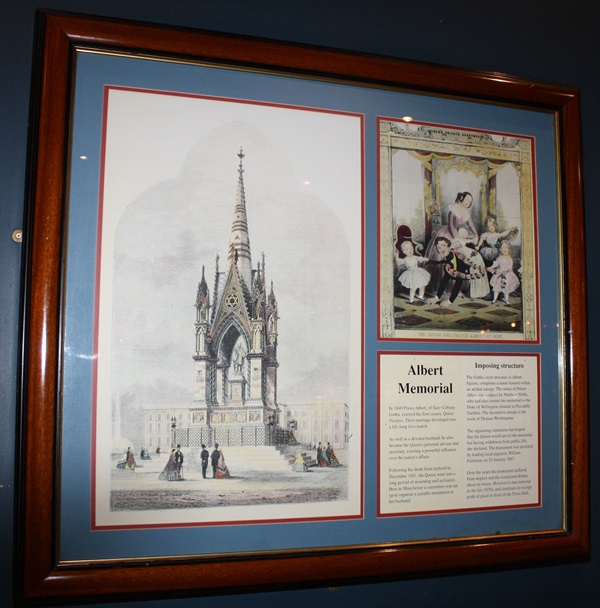
The text reads: In 1840 Prince Albert, of Saxe-Coburg-Gotha, married his first cousin, Queen Victoria. Their marriage developed into a life-long love match.
As well as a devoted husband, he also became the Queen’s personal adviser and secretary, exerting a powerful influence over the nation’s affairs.
Following his death from typhoid in December 1861, the Queen went into a long period of mourning and seclusion. Here in Manchester a committee was set up to organise a suitable monument to her husband.
The Gothic-style structure in Albert Square, comprises a statue housed within an arched canopy. The statue of Prince Albert was sculpted by Matthew Noble, who had also created the memorial to the Duke of Wellington situated in Piccadilly Gardens. The decorative canopy is the work of Thomas Worthington.
The organising committee had hoped that the queen would unveil the memorial but having withdrawn from public life, she declined. The monument was unveiled by the leading local engineer, William Fairbairn, on 23 January 1867.
Over the years the monument suffered from neglect and the occasional debate about its future. However it was restored in the late 1970s, and continues to occupy pride of place in front of the Town hall.
Framed drawings and text about the arrival of the railway.
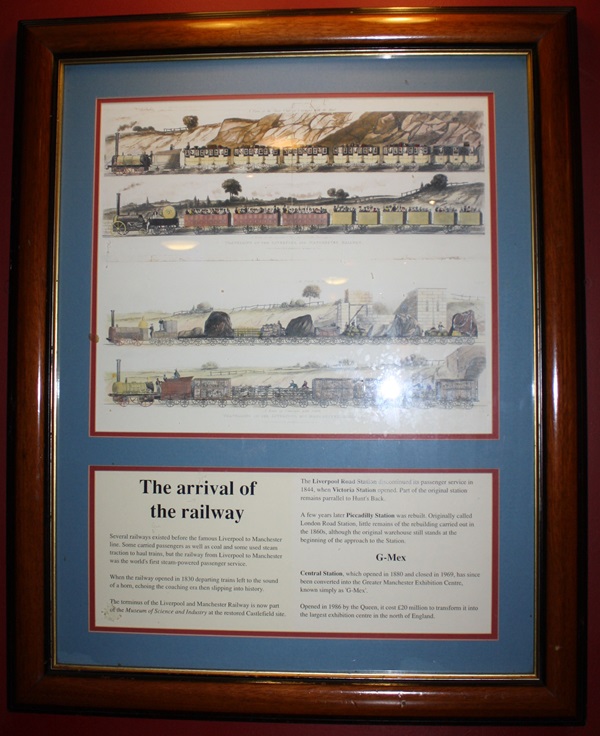
The text reads: Several railways existed before the famous Liverpool to Manchester line. Some carried passengers as well as coal and some used steam traction to haul trains, but the railway from Liverpool to Manchester was the world’s first steam-powered passenger service.
When the railway opened in 1830 departing trains left to the sound of a horn, echoing the coaching era slipping into history.
The terminus of the Liverpool and Manchester Railway is now part of the Museum of Science and Industry at the restored Castlefield site.
The Liverpool Road Station discontinued its passenger service in 1844, when Victoria Station opened. Part of the original station remains parallel to Hunt’s Back.
A few years later Piccadilly Station was rebuilt. Originally called London Road Station, little remains of the rebuilding carried out in the 1860s, although the original warehouse still stands at the beginning of the approach to the station.
Central Station, which opened in 1880 and closed in 1969, has since been converted into the Greater Manchester Exhibition Centre, known simply as ‘G-Mex’.
Opened in 1986 by the Queen, it cost £20million to transform it into the largest exhibition centre in the north of England.
A framed photograph of the Manchester Ship Canal.
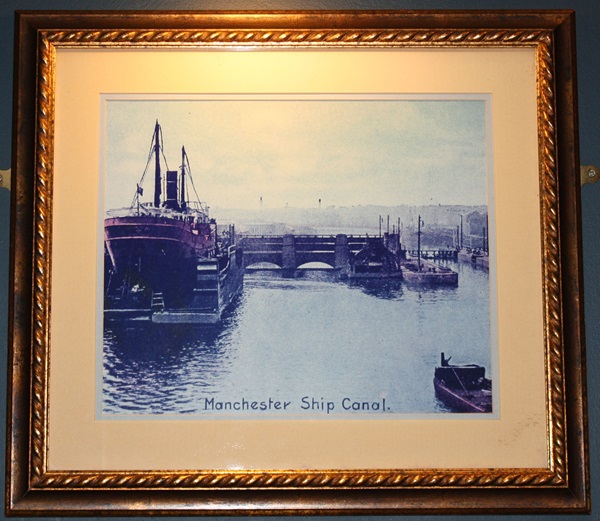
A framed photograph of Manchester, Piccadilly, in 1906.
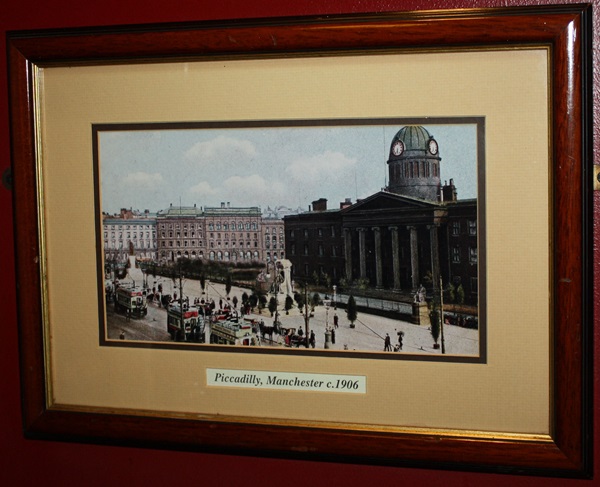
A framed photograph of Manchester, Piccadilly, in 1930.
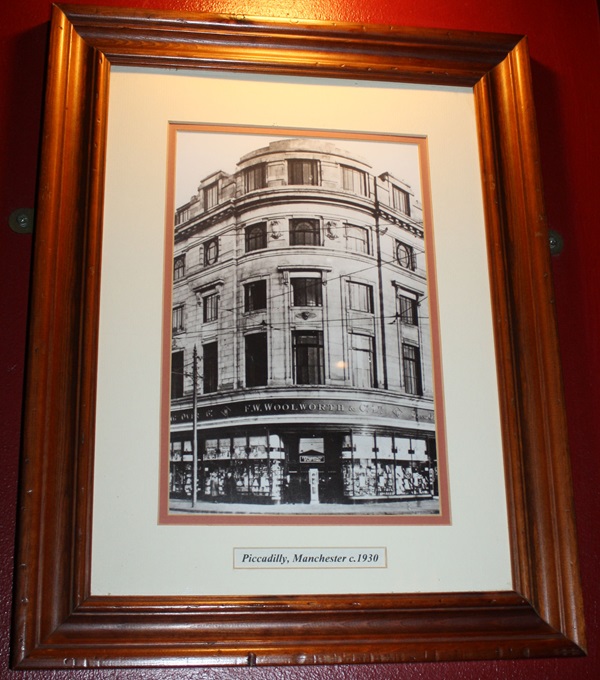
A framed photograph of Manchester, Piccadilly, in 1940.
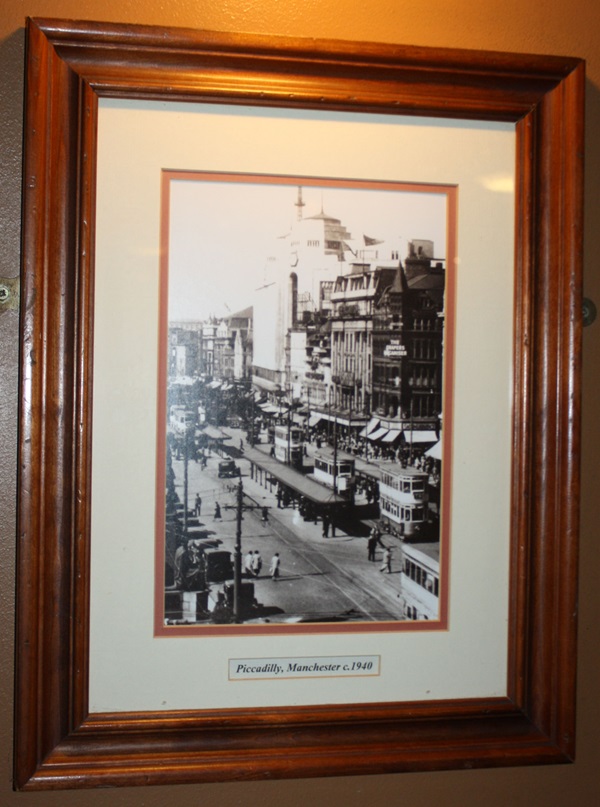
A framed photograph of Manchester in 1910.
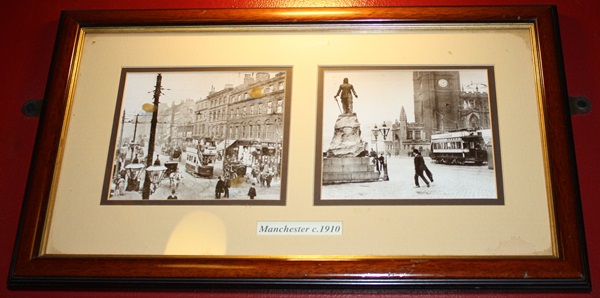
A framed photograph of the Cromwell Monument, Manchester, in 1911.
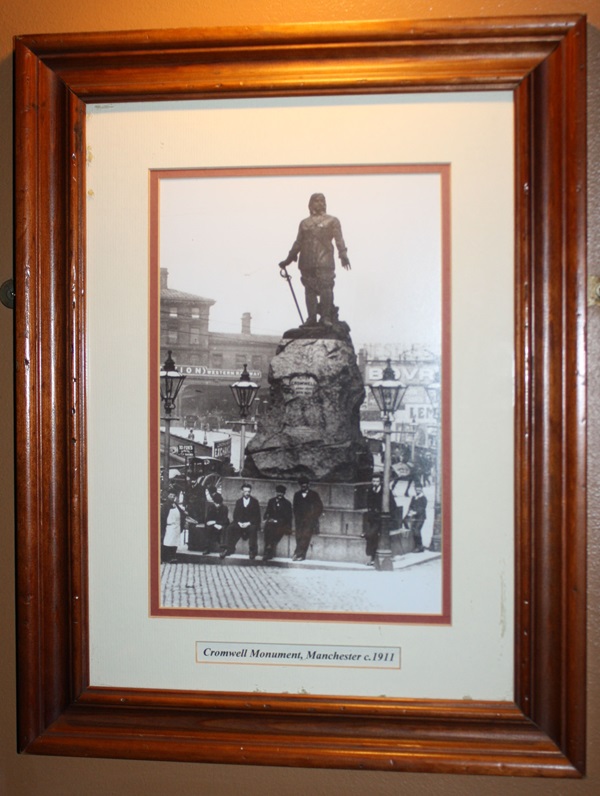
A framed photograph of Fennel Street, Manchester, in 1910.
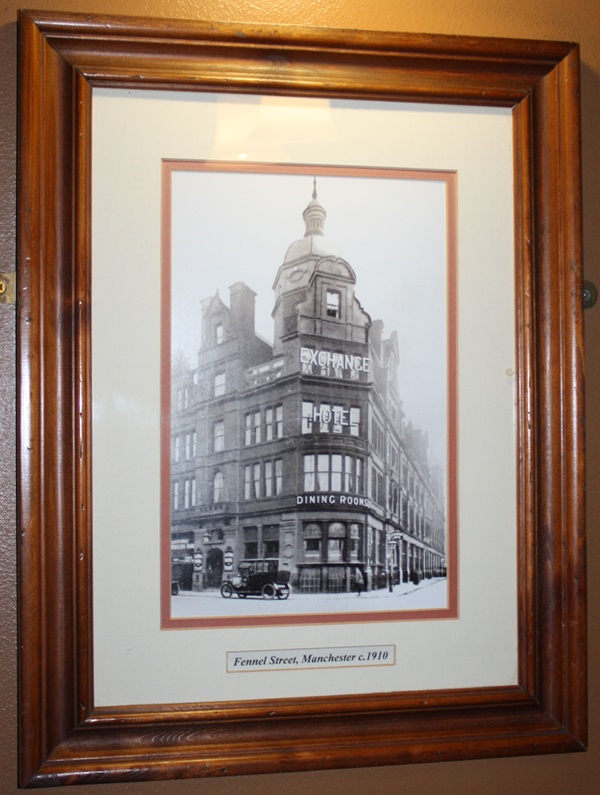
External photograph of the building – main entrance.
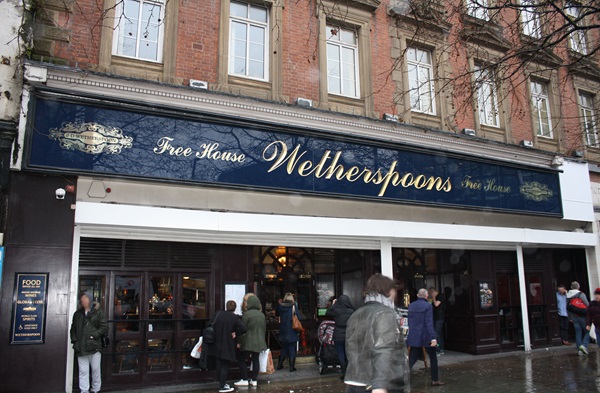
If you have information on the history of this pub, then we’d like you to share it with us. Please e-mail all information to: pubhistories@jdwetherspoon.co.uk